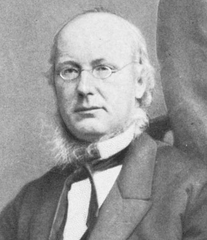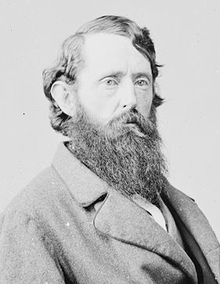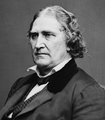1872 Democratic National Convention
|
1872 presidential election | |
|
Nominees Greeley and Brown | |
| Convention | |
|---|---|
| Date(s) | July 9–10, 1872 |
| City | Baltimore, Maryland |
| Venue | Ford's Grand Opera House, East Fayette Street (between North Howard & Eutaw Streets) |
| Candidates | |
| Presidential nominee | Horace Greeley of New York |
| Vice Presidential nominee | Benjamin Gratz Brown of Missouri |

The 1872 Democratic National Convention was a presidential nominating convention held at Ford's Grand Opera House on East Fayette Street, (between North Howard and North Eutaw Streets) in Baltimore, Maryland on July 9 to 10, 1872. It resulted in the nomination of newspaper publisher Horace Greeley, (1811-1872), of New York and Governor Benjamin Gratz Brown, (1826-1885), of Missouri for President and Vice President, a ticket first nominated earlier by the rump Liberal Republican faction convention meeting also in Baltimore's newly built premier Opera House of nationally well-known theatre owner/operator John T. Ford, (1829-1894), (infamous as the owner of the Ford's Theatre in Washington, D.C. where 16th President Abraham Lincoln had been assassinated in April 1865) of the major Republican Party which had already re-nominated incumbent 18th President Ulysses S. Grant, (1822-1885), of the regular Republicans for another term.
The convention was called to order by Democratic National Committee chairman August Belmont. Thomas Jefferson Randolph served as the convention's temporary chairman and James R. Doolittle served as permanent president. At six hours in length, stretched over two days, the convention was the shortest meeting of a major political party convention in history.[1]
The convention
Accepting the "Liberal Republican" platform meant the Democrats had accepted the "New Departure", rejecting the anti-Reconstruction platform of 1868. They realized to win they had to look forward, and not try to refight the Civil War.[2] Also, they realized they would only split the anti-Grant vote if they nominated a candidate other than Greeley. However, Greeley's long reputation in the years before as the most aggressive attacker of the earlier Democratic Party, its principles, its leadership, and its activists cooled enthusiasm among many of the delegates for the potential nominee.
Presidential candidates
-

Former Representative and "New York Tribune" publisher Horace Greeley of New York
-

Former Representative William S. Groesbeck of Ohio
Horace Greeley received 686 of the 732 delegate votes cast on the first ballot. The motion to have Greeley's nomination be declared unanimous was carried.
| Presidential Ballot | 1st | Unanimous |
|---|---|---|
| Horace Greeley | 686 | 732 |
| Jeremiah S. Black | 21 | |
| James A. Bayard | 15 | |
| Blank | 8 | |
| William S. Groesbeck | 2 |
Source: Official proceedings of the National Democratic convention, held at Baltimore, July 9, 1872. (September 3, 2012).
Vice presidential candidates
Benjamin G. Brown received 713 of the 732 delegate votes cast on the first ballot.
| Vice Presidential Ballot | 1st |
|---|---|
| Benjamin Gratz Brown | 713 |
| Blank | 13 |
| John W. Stevenson | 6 |
Source: Official proceedings of the National Democratic convention, held at Baltimore, July 9, 1872. (September 3, 2012).
See also
- History of the United States Democratic Party
- History of Baltimore
- United States presidential election, 1872
- 1872 Republican National Convention
- Ulysses S. Grant
References
External links
- Official proceedings of the National Democratic convention, held at Baltimore, July 9, 1872
- Democratic Party Platform of 1872 at The American Presidency Project
| Preceded by 1868 New York |
Democratic National Conventions | Succeeded by 1876 St. Louis |



